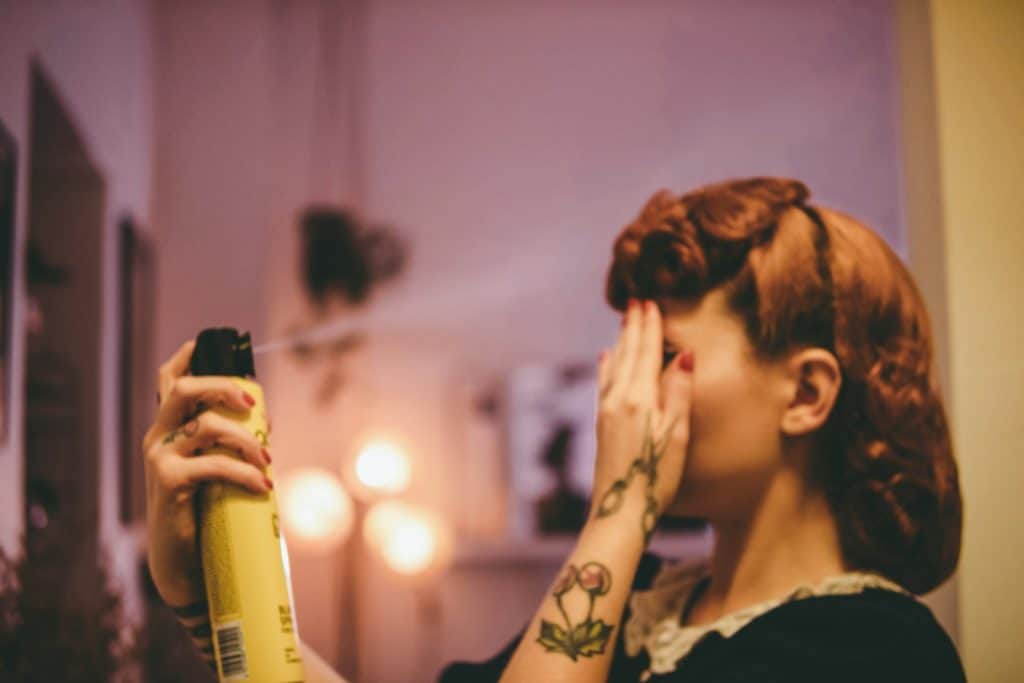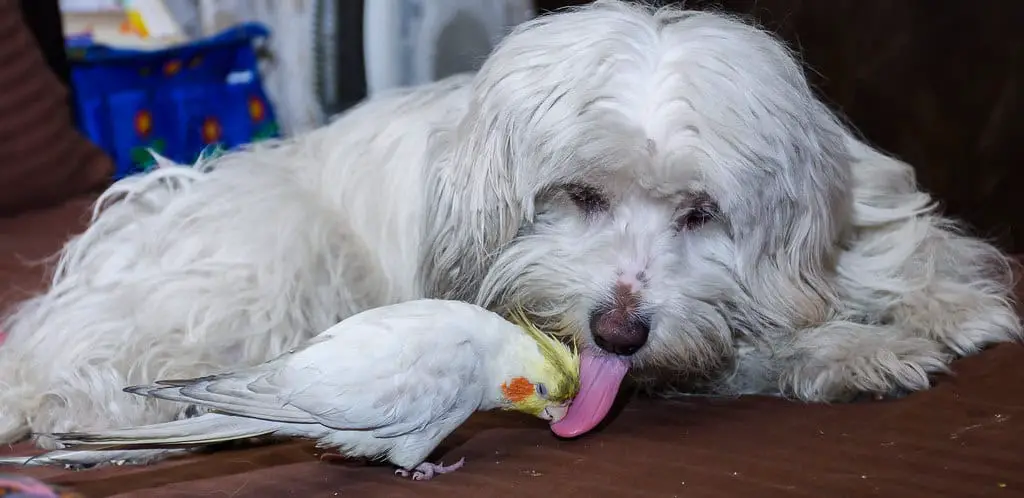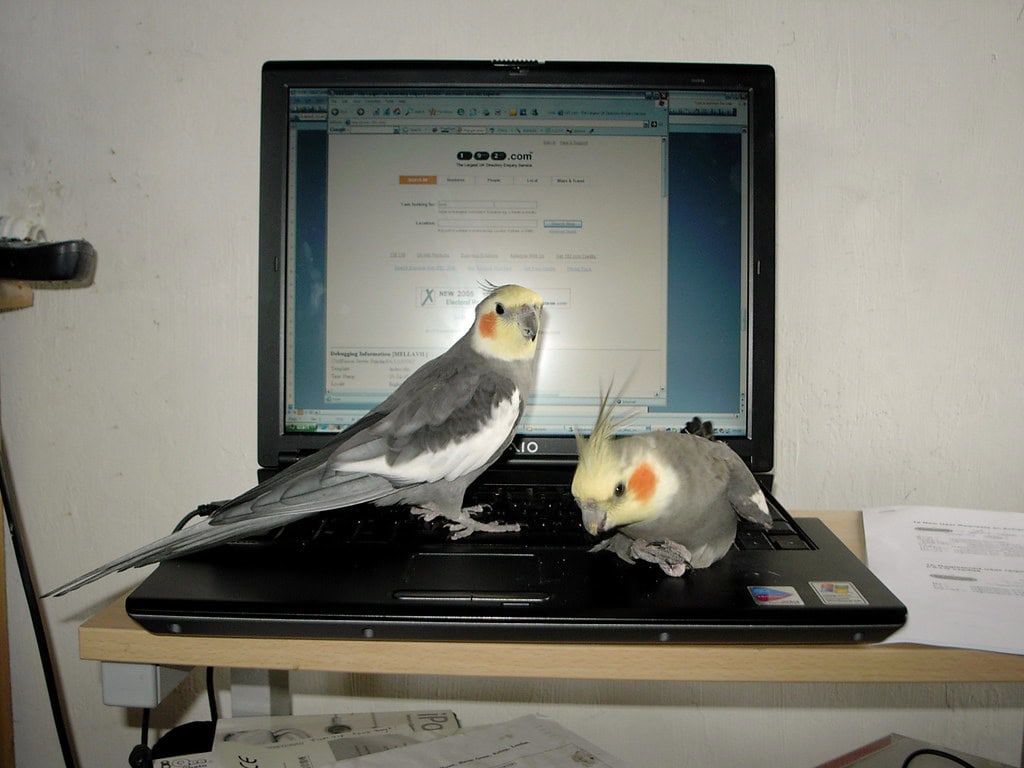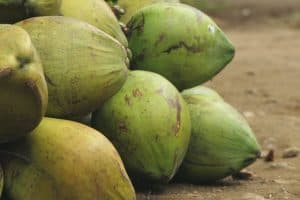Imagine bringing a cockatiel into your home, envisioning a new, joyful companion with its charming chirps and vibrant personality. However, it’s crucial to recognize that your everyday environment contains several hazards that could pose risks to your feathered friend. From Teflon-coated cookware that can release harmful fumes to common houseplants that are surprisingly toxic, the typical home is full of potential dangers for a cockatiel.
Understanding these risks is the first step to ensuring your pet’s safety and well-being. By learning about cockatiel’s household hazards, you’ll be equipped to make informed decisions about how to arrange your space and what items to keep out of reach. This knowledge not only helps in creating a secure environment but also enhances the quality of life for your cockatiel, allowing you both to enjoy a happy, healthy coexistence.
Common Household Hazards for Cockatiels

Identifying common household hazards for cockatiels is crucial for ensuring their safety and health. Let’s explore specific dangers and how you can prevent these risks.
Toxic Foods
Cockatiels are highly susceptible to certain foods that are harmless to humans but lethal to them. Chocolate, avocado, and garlic are extremely toxic to birds, causing serious health issues or even death. Caffeine in coffee, tea, or soda can drastically increase a cockatiel’s heart rate, leading to potential fatalities. Always make sure your bird only ingests fresh food that is safe and specifically recommended for them. It’s best to consult an avian veterinarian if you’re unsure about certain foods.
Dangerous Household Items
Many common items around your home pose serious threats to cockatiels. Non-stick cookware, when overheated, releases polytetrafluoroethylene (PTFE) fumes, which are deadly to birds. Exposure to aerosol sprays, scented candles, and air fresheners can lead to respiratory distress or toxic fumes poisoning in cockatiels.
Electrical cords also present a risk if chewed on, potentially resulting in electrocution or ingestion of hazardous materials. Ensure that risky objects, including zipper teeth from purses or bags and costume jewelry, are out of reach from your bird. Additionally, water dishes and hair dryers should be monitored to ensure they are never left unattended in the presence of your pet.
Hazardous Plants
Many plants that enhance the aesthetic of your home can be dangerous to cockatiels. Common toxic plants include lilies, azaleas, and rhododendrons, which can cause severe health problems if ingested. Before bringing any plants into your home, it’s crucial to verify that they are safe for birds. Opt for bird-safe options and always keep potentially dangerous plants in a separate room, inaccessible to your cockatiel. This precaution not only prevents poisoning but also helps avoid the risk of physical injuries from sharp plant edges.
Physical Threats to Cockatiels
Beyond dietary and indirect environmental hazards, direct physical threats in your home can pose significant risks to your cockatiel. Recognizing and mitigating these risks is crucial for ensuring the safety of your pet bird, allowing it to thrive in a secure environment.
Open Water Sources
Open water sources such as toilet bowls, sinks, and fish tanks can be perilous for your cockatiel. If your bird accidentally falls into any sizable amount of water, it risks drowning, a concern not to be taken lightly. Always keep toilet lids closed, cover sinks when not in use, and ensure that fish tanks have secure tops. Additionally, water dishes in the bird’s cage must have shallow water to prevent accidents, signaling the importance of constant supervision and proper water management in the household.
Windows, Mirrors, and Fans
Windows and mirrors pose a significant collision hazard to flying birds, potentially causing severe injuries or even death. To protect your cockatiel, apply visible decals on glass surfaces to make them more apparent. Alternatively, keep curtains or blinds closed to avoid these accidents. Ceiling fans should always be turned off when your cockatiel is out of its cage to prevent injuries from fan blades. These precautions will help ensure that your bird can fly safely in its environment.
Electrical Hazards
Electrical cords are a common household hazard to curious cockatiels, who may chew on wires, risking electrocution or burns. Secure all loose cords, use cord concealers, and keep your bird away from electrical appliances, especially when they are operative. Hair dryers, for instance, should not be used near your cockatiel to avoid accidental burns. Additionally, be vigilant about other electrical hazards, such as heated appliances left unattended like space heaters, which can become dangerously hot and pose a burn risk to your bird.
Air Quality and Cockatiels

Maintaining clean air within your home is crucial for the health of your cockatiel. Airborne hazards can be particularly harmful to pet birds due to their sensitive respiratory systems. Here, you’ll learn how to protect your cockatiel from common air quality threats.
Smoke and Aerosols
Keep your cockatiel’s environment free from smoke and aerosols, as they can cause severe respiratory issues and discomfort. Avoid smoking cigarettes or using other smoking products around your pet bird. Additionally, common household items like hairspray, perfumes, and even scented candles release aerosols that can damage your cockatiel’s lungs if inhaled. When using these products, ensure it’s done far from where your cockatiel resides, preferably in a well-ventilated area or different room.
Toxic Fumes from Cookware
Non-stick cookware, when overheated, releases polytetrafluoroethylene (PTFE) fumes, which are toxic to birds. Exposure to these fumes can be fatal for your cockatiel. To prevent this risk, use cookware made from safe materials such as stainless steel or ceramic in your kitchen. Moreover, ensure that your bird is kept in a room separate from the kitchen, as fumes can rapidly disperse throughout the house, particularly in smaller or less ventilated spaces.
Chemical Cleaners and Pesticides
Cleaning products often contain harsh chemicals that can harm your cockatiel. Volatile organic compounds (VOCs) found in many sprays, bleaches, and disinfectants can degrade your bird’s air quality. Always opt for bird-safe cleaning alternatives or ensure the room is adequately aired out if you must use strong cleaning agents. Keep your cockatiel in a separate room while cleaning and until the fumes have completely dissipated. Similarly, avoid using pesticides and insecticides near areas frequented by your bird to prevent accidental inhalation or ingestion.
Safe Interaction and Environment

Creating a secure interaction and environment for your pet cockatiel ensures both their well-being and happiness. Following the discussion on air quality, this section focuses on interactions with children and other pets, safe playtime activities, and maintaining suitable temperatures and ventilation for your cockatiel’s safety.
Children and Other Pets
When introducing your cockatiel to small children or other pets, you must supervise these interactions at all times. Children, out of excitement, may handle birds too roughly, which could lead to injuries like broken wings. Similarly, pets like cats and dogs might see cockatiels as prey. It’s paramount to progressively and carefully introduce them, ensuring the cockatiel feels secure. If interactions become stressful for the bird, it’s best to keep them in separate rooms to prevent accidents or injuries.
Ensuring Safe Playtime
Playtime is crucial for your cockatiel’s mental and physical health, but it requires a bird-safe environment. Remove hazardous objects such as costume jewelry, which can be ingested or caught on parts, and hair dryers, which can cause severe burns if left unattended. Additionally, ensure all toys are free from toxic materials and small parts that could cause choking. Safe toys include untreated wood and rope toys designed specifically for birds. Watch out for sharp edges and zipper teeth on objects that birds might access during play.
Suitable Temperatures and Ventilation
Cockatiels are sensitive to temperature fluctuations and poor ventilation. Keep your cockatiel’s environment away from direct sunlight and draughty areas. Use space heaters and ceiling fans with caution to avoid dangerously hot or cold conditions. Ideal room temperatures range from 65 to 80°F (18 to 27°C), and good ventilation is vital to prevent the buildup of toxic fumes from non-stick cookware or household cleaning agents. Regularly clean their water dishes and ensure fresh food is available to help maintain optimal health.
- Enriching the Life of BirdsThis parakeet nesting box adopts combination of natural pine and high-quality transparent acrylic window. Not only makes it easy for us to clear see the state of parrots in the bird breeding box through the acrylic side, but also can observe and record the breeding and hatching process between parrots. In addition, we added a wooden board that is very easy to install and remove, so that the parrot can have a dark environment at night while sleeping.
- Safe and Durable Material Bird nesting box is respectively made of natural pine wood, acrylic window which are warm and cozy, safe, non-toxic, chewable and transparent field of view to ensure healthy breeding for parakeet birds. After you observe the activities of the parrot, if you feel that the bird box is too bright, you can install a small wooden board at any time, so that you will be at ease.
- Easy to use Each bird's nest box includes accessory screws and bird perches to fit completely inside or outside the cage. There is compartment inside the box to protect the bird eggs, and the hinged lid is designed for easy opening and closing of the bird nest box, as well as quick cleaning and changing of bird bedding materials.
- Good Parrot Supplies Pet bird owners have a common hobby, that is to keep looking for good quality pet supplies for their little animals. This parakeet nesting box is a practical house for breed, rest, sleep, relax and play. Its also a good gift for your lovely parrots.
Bird-Proofing Your Home
Creating a bird-proof environment is crucial for the safety of your cockatiel. Bird-proofing involves making your home safe from potential hazards that could harm your feathered friend. This means securing or removing items that could pose a risk, such as sharp objects, small parts, and toxic substances.
Bird Toys for Enrichment
Bird toys are essential for your cockatiel’s mental stimulation and physical exercise. However, it’s important to choose bird toys that are safe and bird-proof. Opt for toys made from non-toxic materials, avoiding those with small parts that could be chewed off and ingested. Wooden toys, ropes, and natural materials are excellent choices. Regularly inspect and rotate the toys to keep your cockatiel engaged and prevent boredom.
Understanding Your Bird’s Feathers
A healthy cockatiel’s feathers are a key indicator of its overall well-being. Changes in the condition of your bird’s feathers, such as excessive molting or feather loss, could signal health issues. Ensure that your cockatiel’s environment is free from hazards that could negatively impact its feather health, such as harmful fumes or poor air quality. Regular grooming and providing a proper diet can also help maintain healthy feathers.
Recognizing and Addressing Sick Birds
Being attentive to the signs of sick birds is vital for their well-being. Symptoms like lethargy, changes in feather condition, and changes in droppings can indicate that your cockatiel might be unwell. In such cases, it’s important to consult with an avian veterinarian promptly. Ensuring a bird-proof environment and providing a healthy diet can help prevent some common illnesses, but always be ready to seek professional advice if you notice any signs of illness.
Final Thoughts: What are Your Cockatiel’s Household Hazards
Ensuring your cockatiel’s safety at home requires vigilance and a proactive approach. By recognizing and removing potential hazards, you’re not only protecting your feathered friend but also promoting a healthier, happier life for them. Remember, the responsibility of creating a safe environment rests on your shoulders. Stay informed, stay alert, and your cockatiel will thrive under your care.




